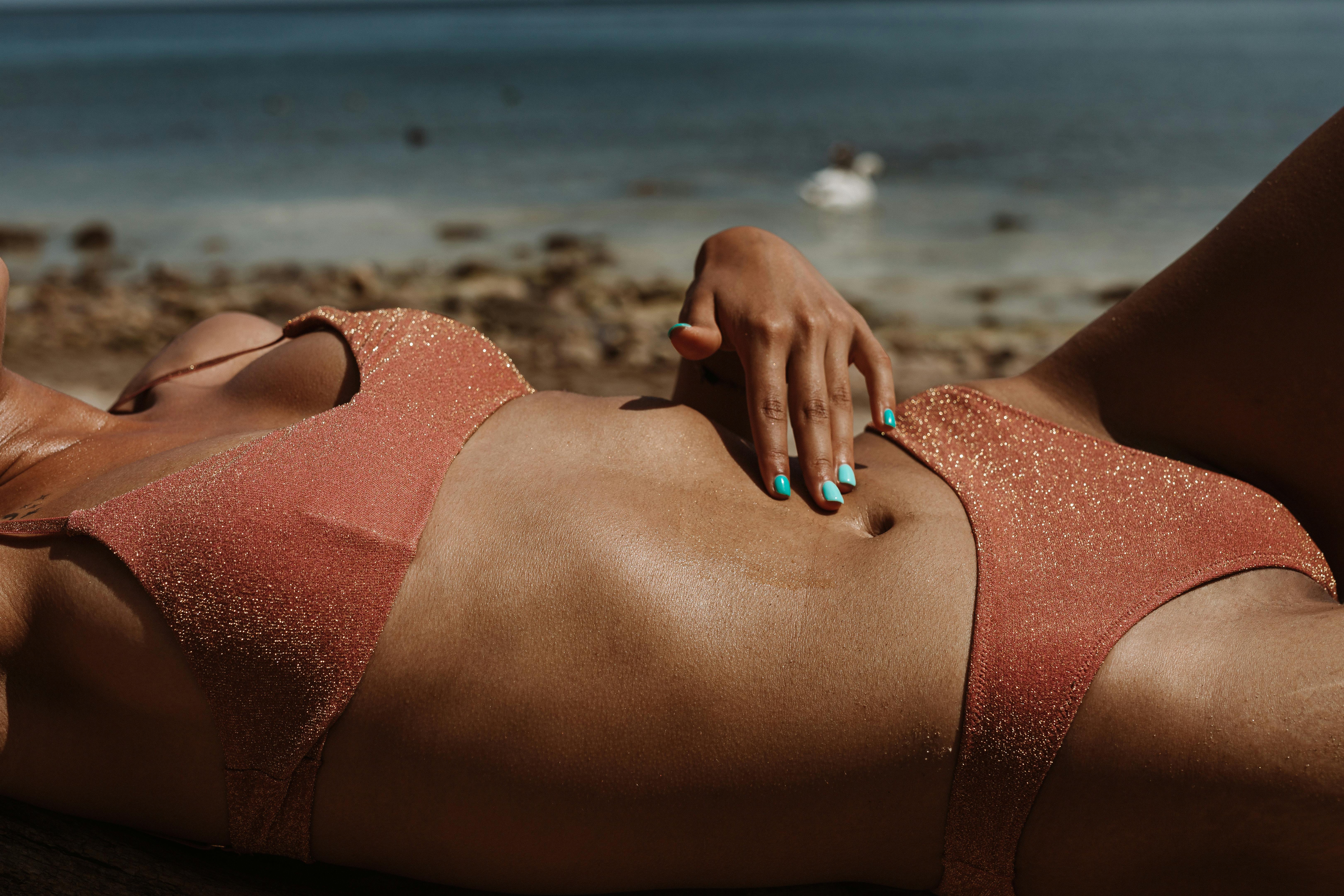Guide to 2025 Thong Bikinis and Minimalist Sustainable Swimwear in the US
This handbook explains 2025 trends in thong and minimalist sustainable swimwear for United States shoppers, emphasizing sustainability and expanded size ranges. It describes where to find such styles online, how inclusive sizing labels work, practical fit steps, care guidance, and shopping logistics.

The 2025 swim season in the US centers on sleek lines, pared-back silhouettes, and materials designed for longevity. Minimalist thong and cheeky cuts dominate beach and pool looks, while recycled and responsibly sourced fabrics are more common. With so many options, understanding trends, sizing, sustainability language, and search tactics can help you find pieces that fit well and hold up over time.
What drives 2025 minimalist and thong swimwear trends?
Consumer behavior points to functional minimalism: fewer seams, adjustable ties, and compressive yet soft fabrics that dry fast and resist fading. High-leg cuts visually elongate the body, while thong and cheeky backs reduce tan lines and bulk under cover-ups. Sustainability is another driver; more brands are integrating recycled nylon or polyester blends and publishing care guidance to extend garment life. US shoppers also favor modular sets—mix-and-match tops and bottoms—making it easier to tailor coverage, rise, and support.
Which brands and US online destinations to check—and what to look for?
Seek clear product filters and robust fit information. Look for coverage labels (minimal, cheeky, tanga), rise options (low, mid, high), and tie-side variants for fine-tuning fit. Detailed fabric pages are useful; many brands now name their fibers and lining construction and clarify UPF ratings for sun protection. US online destinations that stand out typically provide size charts with measurements in inches, torso guidance for one-pieces, and reviews with photos. Indicators of quality include clean stitching at stress points, double lining in light colors, and strap adjustability. For durability, note wash instructions (cold rinse, no wringing, shade drying) and whether hardware is coated to resist corrosion.
Where to find inclusive sizing and what labels really mean
Inclusive sizing in swimwear varies. Alpha sizes (XS–XXL) can work for stretchy, minimal styles, but cup-specific or band-and-cup sizing (e.g., 34D) tends to support fuller busts more consistently. Labels such as DD+ or Full Bust usually signal deeper cups, wider wings, or thicker straps. Curve or Extended Size collections often add room through the hip and thigh, while Long Torso one-pieces adjust strap length, torso length, or both. If you need extra coverage without bulk, seek adjustable sides or back ties and note the coverage scale for the bottom: minimal (thong, tanga), cheeky, moderate, or full. For consistency across brands, measure your bust, underbust, waist, and hip in inches and compare against each brand’s chart; measurement-based selection tends to beat choosing by usual ready-to-wear size.
How to search US stores for thong, cheeky, and string styles
Use multiple keywords in site search: thong bikini bottom, cheeky bottom, string bikini, tie-side, tanga, skimpy, minimal coverage, high-leg. Apply filters for back coverage and rise, then open size charts in new tabs to compare hip measurements across styles. Read fabric composition: recycled nylon and elastane blends can feel snug; if you’re between sizes, consult fit notes and reviews for stretch feedback. Check return windows and hygiene liner rules before purchasing; some stores require liners intact for returns. To reduce returns, order two sizes only if free returns are offered, prioritize styles with adjustable ties or sliders, and review customer photos to see real-life coverage on different heights and hip measurements. When shopping local services or boutiques in your area, ask whether they stock the same cuts as online so you can try on the silhouette before ordering a specific color or print.
Provider snapshot: examples of US brands and destinations offering minimalist, thong, or cheeky options, plus useful features.
| Provider Name | Services Offered | Key Features/Benefits |
|---|---|---|
| Summersalt | Swim separates and one-pieces | Wide size range, fit guidance tools, recycled-content fabrics |
| Andie Swim | Minimalist bikinis and one-pieces | Coverage scale visuals, fit quiz, adjustable straps and ties |
| CUUP | Swim tops and bottoms | Cup-focused sizing, underwire and non-wire options, clean lines |
| SKIMS | Mix-and-match swim | Broad size range, neutral colorways, multiple coverage levels |
| Aerie | Bikinis and sets | Extensive filters, customer reviews with photos, frequent size restocks |
| Target | Multi-brand swim | Clear coverage filters, value assortment, store pickup and returns |
| Patagonia | Performance swim | Recycled materials emphasis, durable construction, repair-minded ethos |
| Vitamin A | Minimalist and sustainable swim | Recycled fabrics, sleek cuts, detailed fabric descriptions |
| Girlfriend Collective | Swim separates | Recycled materials, size-inclusive range, straightforward fit notes |
Drivers of 2025 minimalist and thong swimwear trends in materials
Materials innovations are shaping both look and performance. Recycled nylon (often regenerated from post-consumer sources) and recycled polyester are common, with elastane added for stretch. Denser knits create a smoothing effect; ribbed or textured weaves add visual interest without extra seams. Pay attention to lining: double-lined light colors help prevent show-through, while power-mesh panels can add subtle support. UPF ratings and colorfast dyes matter if you swim in chlorinated pools; darker, saturated colors and rinsing immediately after swimming typically help preserve longevity.
Brands and US online destinations to check and what to look for in care and longevity
Care is central to sustainable wear. Rinse in cool water after each use, avoid fabric softeners, and dry flat in shade. Many brands now publish care pages and durability tips; look for advice on sunscreen staining, hardware care, and storage. When evaluating sustainability claims, prefer specificity: recycled content percentages, recognized certifications (such as OEKO-TEX Standard 100 for finished materials or GRS for recycled content), and transparently described supply-chain practices. Specifics help you compare like for like without relying on vague eco language.
Where to find truly inclusive sizing and what those labels mean across brands
Across US retailers, inclusive sizing language can differ. For bottoms, fit often hinges on hip and rise measurements; for tops, band-and-cup systems or alpha sizing with support indicators (light, medium, high) are common. Look for brands that offer multiple back styles on the same cup size, since strap placement changes support and comfort. If you have a long torso, scan filters for Long or Tall, or measure from shoulder to crotch and match to size tables. For thong and cheeky cuts, some brands list back coverage percentages or photo comparisons; these visuals help set expectations and cut returns.
How to reduce returns while shopping thong, cheeky, and string styles
Build a quick pre-checklist: confirm coverage scale, rise, gusset width, and adjustability; check fabric blend and lining; read at least three reviews from bodies closest to your measurements; verify return policy and hygiene-liner requirements. If you’re unsure on bottoms, tie-side styles allow micro-adjustments at the hip. For tops, sliders and back ties provide flexibility across ribcage expansion. Keep your current measurements on your phone and compare brand charts each time—small variances in elastane content can change fit.
Conclusion Thong and minimalist sustainable swimwear in 2025 is about refined coverage, adjustable design, and clear information. With attention to fabric specifics, sizing transparency, and smarter search tactics, US shoppers can find streamlined pieces that fit comfortably and last through many swim seasons without excess trial and error.




